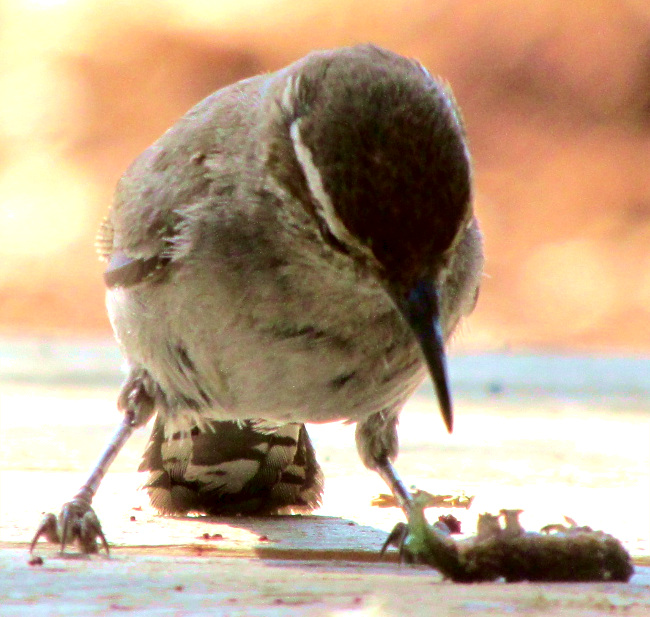Excerpts from Jim Conrad's
Naturalist Newsletter

issued June 19, 2021 from the valley of the Dry Frio River in northern Uvalde County, southwestern Texas, on the southern border of the Edwards Plateau; elevation ~1750m (~5750 ft); N29.62°, W99.86°; USA
BEWICK'S WRENS BUSY FEEDING NESTLINGS
Texas Liveoaks in this are suffering from "oak decline," as described in an entry on our Texas Live Oak page. Possibly as a consequence, the weakened trees appear to have more than the usual number of caterpillars feeding on them, and nesting birds in this area are benefiting. Especially the Bewick's Wren, Thryomanes bewickii, who must nest quite nearby my camp beneath two big liveoaks, eat their share.
Each afternoon as I sit reading, periodically an adult flies into the overhead branches, within seconds a large, succulent, brown caterpillar falls onto the wooden platform, the wren descends, and starts stabbing the caterpillar with its beak and beating it back and forth onto the hard wood, as shown in the above photo. That caterpillar looks like a cankerworm, a kind of inchworm, though it's hard to say.
Once the caterpillar has been beaten so much that it's oozing green stuff and the wren's beak is stringy with caterpillar juice, the wren quickly flies off low carrying it, at the same time making a one-note peep, and instantly a juvenile flies from a nearby shadowy bush toward a spot where, apparently, there's some kind of agreement that feeding will take place. Quickly the caterpillar goes into the kid's maw, the adult may issue a brief call, a short bubbly one ending with a quick "rrrrrrrr."
Bewick's Wrens are permanent residents in the south-central US, the west coast north to southern British Columbia, and south in the more arid parts of Mexico all the way to Oaxaca. Except for the white margins of his tail, he looks and behaves like the Carolina Wrens I grew up with in Kentucky, but I never saw one there.